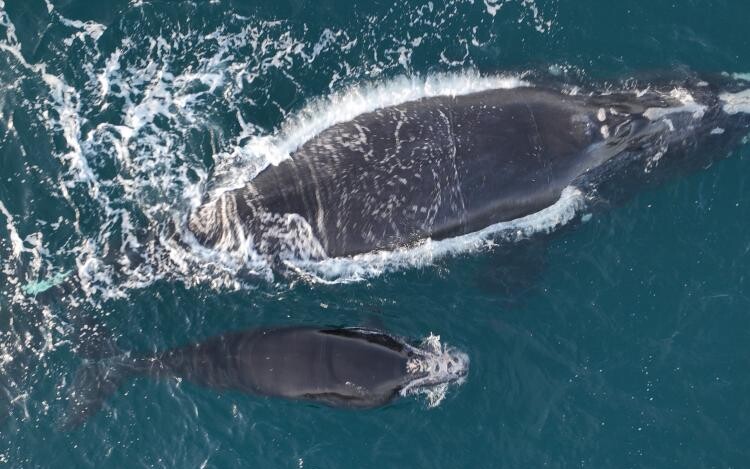A young North Atlantic right whale calf, deeply wounded by a vessel strike weeks ago, washed up dead on Cumberland Island National Seashore in Georgia March 3. It’s now the 39th victim since the National Marine Fisheries Service began tracking mounting deaths among the endangered species in 2017.
Experts with NMFS, the Georgia Department of Natural Resources and the Florida Fish and Wildlife Conservation Commission identified the whale as the injured 2024 calf of a right whale that scientists catalogued as #1612, dubbed “Juno."
The calf was first seen and reported by fishermen on Jan. 3 with serious injuries to its head, mouth, and lip from a vessel strike. Images of deep wounds were interpreted by experts as being caused by propellers on a vessel between 35 and 57 feet in length.
Any definitive findings will be brought to bear on the debate over a proposed NMFS rule that would extend vessel speed restrictions when right whales are on the move.
A 10-knot speed limit now applies to vessels over 65 feet in length when NMFS declares a speed zone, and the proposed rule would lower the rule to vessels between 35 feet and 65 feet.
“In the first few weeks of its short life, this calf’s face was sliced open by a boat propeller, causing painful and prolonged suffering which sadly resulted in its death. Our government already knows what to do to protect these critically endangered whales, so why are they sitting on it?” said Hermina Glass-Hill, Oceana’s senior field representative in Georgia, in a statement after NMFS released details of the whale stranding.

“Secretary of Commerce Gina Raimondo and President Biden need to immediately release the updated vessel speed rule their own agency proposed nearly two years ago.”
More conclusive evidence could be some time in coming.
‘The carcass was heavily scavenged by sharks,” according to a summary from NMFS about the stranding discovery. “Responders identified it as Juno’s calf based on the unique injuries and markings documented when the calf was alive. Due to the state of the carcass, we will use genetic testing to determine the sex.”
“We will continue to work with our partners to perform a necropsy and evaluate the vessel strike wounds. “





